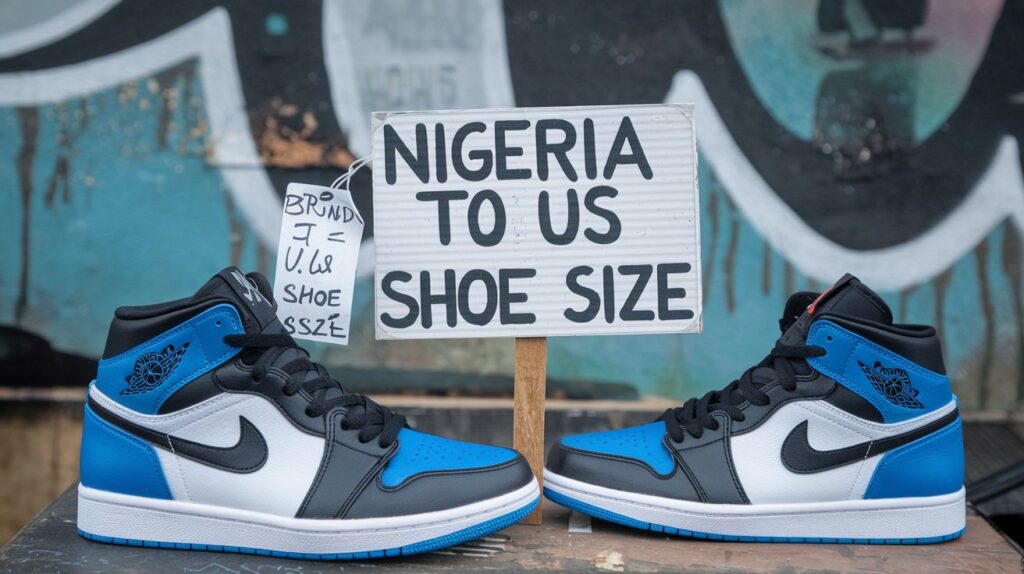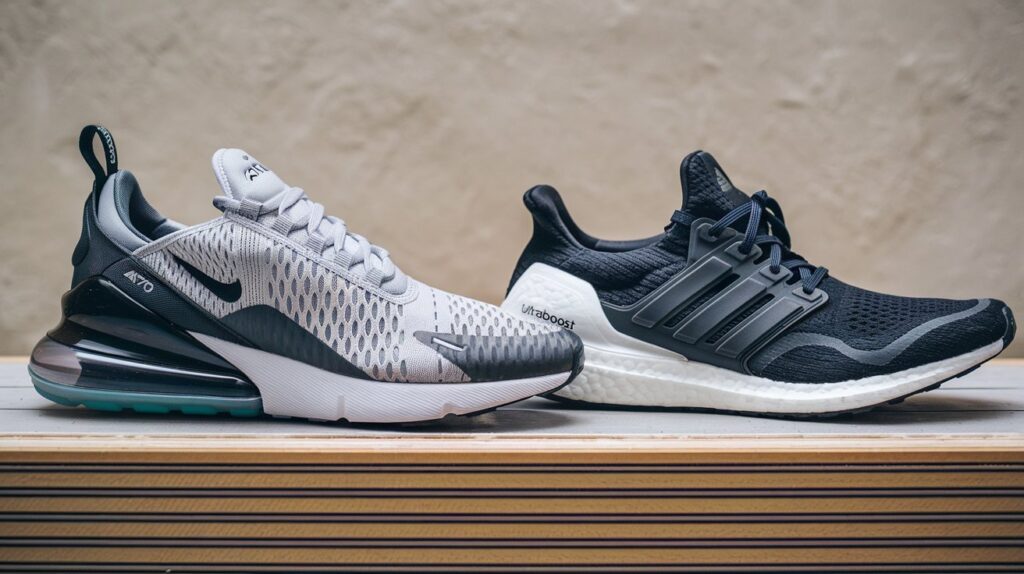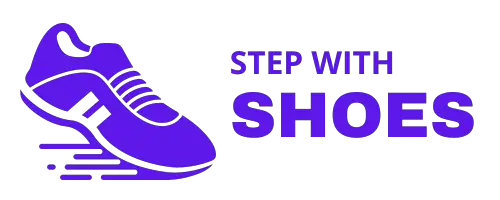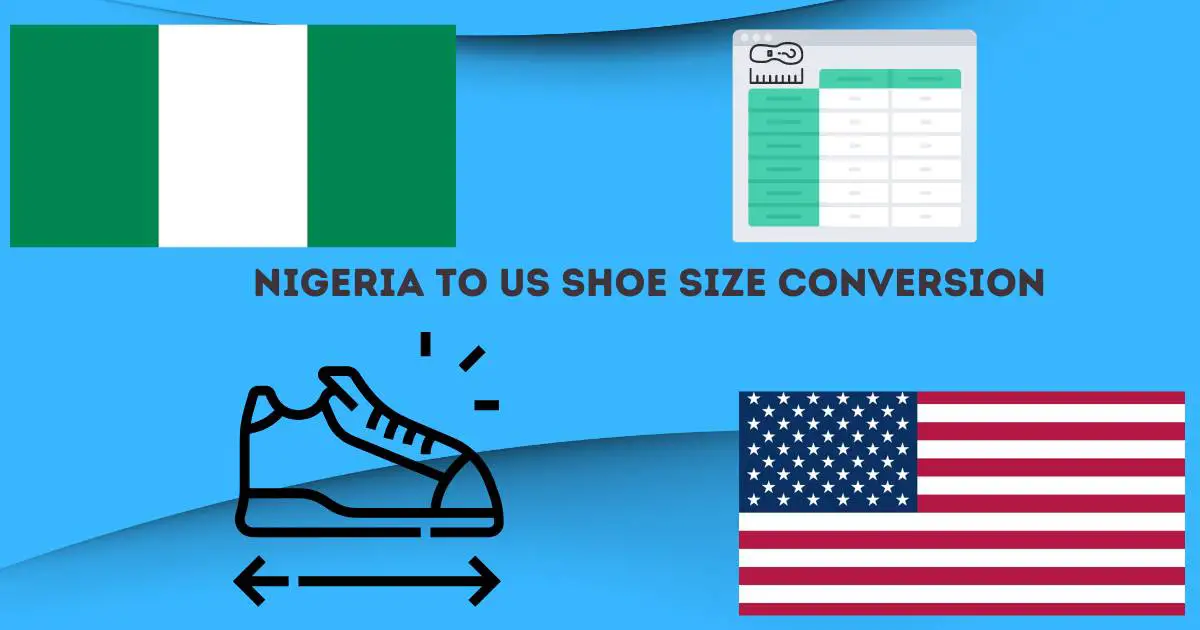This guide provides a conversion chart for shoe sizes between Nigeria and the US. It can often be confusing to determine the right shoe size when shopping online or when traveling to another country. This guide aims to make the process easier by providing a simple conversion chart
Nigeria to US Shoe Size Conversion Chart
To simplify the conversion process, we have created a comprehensive table that converts Nigerian shoe sizes to their corresponding US sizes for both men and women. Please refer to the table below for easy reference
Here are the tables with headings and paragraphs for shoe size conversions between Nigerian and US sizes for men, women, and kids:
Men’s Shoe Size Conversion:
| Nigerian Size | US Men’s Size |
|---|---|
| 35 | 3 |
| 36 | 4 |
| 37 | 5 |
| 38 | 6 |
| 39 | 7 |
| 40 | 8 |
| 41 | 9 |
| 42 | 10 |
| 43 | 11 |
| 44 | 12 |
Understanding shoe sizes is crucial for ensuring a comfortable fit. The table above provides a convenient conversion for Nigerian shoe sizes to US men’s sizes. Whether you’re looking for a size 3 or a size 12, this guide can assist you in finding the right fit for your footwear needs.
Women’s Shoe Size Conversion:
| Nigerian Size | US Women’s Size |
|---|---|
| 35 | 5 |
| 36 | 6 |
| 37 | 7 |
| 38 | 8 |
| 39 | 9 |
| 40 | 10 |
| 41 | 11 |
| 42 | 12 |
Here’s the table with shoe size conversions for women between Nigerian and US sizes. Remember that sizes may vary by brand and style, so it’s always best to refer to the specific size chart of the brand you’re interested in for accurate conversions.
Kids’ Shoe Size Conversion:
| Nigerian Size | US Kids’ Size |
|---|---|
| 35 | 3 |
| 36 | 4 |
| 37 | 5 |
| 38 | 6 |
| 39 | 7 |
| 40 | 8 |
| 41 | 9 |
| 42 | 10 |
| 43 | 11 |
| 44 | 12 |
Here’s the table with shoe size conversions for kids between Nigerian and US sizes. As always, it’s essential to consider variations between brands and styles, so referring to the specific size chart of the brand you’re interested in is recommended for accurate conversions.
the Conversion Chart
The shoe size conversion chart above features three key columns: “Nigerian Size,” “US Men’s Size,” and “US Women’s Size.” The “Nigerian Size” column represents the standard shoe size in Nigeria, derived from the British shoe size standard. The “US Men’s Size” and “US Women’s Size” columns, on the other hand, reflect the corresponding shoe sizes in the United States for men and women respectively, following the conversion rules outlined in the previous section.
Shoe Sizing Systems

Before we delve into the conversion chart, it’s essential to understand the different shoe sizing systems used in Nigeria and the US. In Nigeria, the standard shoe size is based on the European sizing system, which uses centimeters as a unit of measurement. In contrast, the US follows the Imperial system, using inches and fractions of an inch to determine sizes. It’s important to note that some US brands may also use the European sizing system, so it’s always best to double-check before making a purchase
Nigerian Shoe Sizes
To make sure your shoe shopping is spot-on, let’s break down Nigerian sizing. In Nigeria, we often roll with European sizes, running from 39 to 45 for grown-ups. Keep in mind, though, that local markets and artisans might play by slightly different rules. Plus, Nigeria’s diversity means there could be some regional quirks in sizing. Our conversion table aims to smooth out these differences, acting as a friendly bridge from Nigerian to US shoe sizes.
Spot-On Conversions Using Common Sizing Tricks
Our conversion table is your secret weapon for nailing the right fit. We use the trusted European sizing as a middle ground, then seamlessly translate that to US Men’s and Women’s sizes. It’s a neat trick that works for most international shoe brands following the usual sizing norms. But hey, remember, shoes can be as unique as you are, so it’s always smart to double-check with the brand’s size chart, especially if you’re eyeing something a bit more niche.
Half Sizes and Width
We get it – a shoe that’s a smidge too small or wide is a deal-breaker. That’s why our conversion table dives into the world of half sizes and widths. In Nigeria, we’re no strangers to half sizes, and we’ve made sure they’re part of the equation. And width? Yep, we’re talking about how snug or roomy your shoe feels. Letters like ‘N’ for narrow or ‘W’ for wide make a difference. So, when you’re eyeing that perfect pair, remember our table is here to make sure it’s the perfect length, width, and half size – just for you!
This user-friendly guide decodes Nigerian shoe sizes, explains our conversion table in simple terms, and dives into the nitty-gritty of half sizes and widths for a hassle-free and enjoyable shoe shopping experience.
Regional Shoe Sizing Differences in Nigeria
Northern Regions
In the north of Nigeria, especially in places like Kano and Sokoto, traditional sandals known as “Babanriga” are super popular. These sandals are cool with open toes and fancy leatherwork. Now, people in these areas might have slightly different sizes for these awesome kicks. It’s a mix of traditional craftsmanship and the hot weather playing a part in how folks prefer their shoes to fit.
Southern Regions
Down in the south, places like Lagos and Port Harcourt, things are pretty diverse. In big cities, folks might rock more global shoe sizes, thanks to the hip fashion scene. But in smaller towns and villages, where traditions run deep, there’s still love for the local shoe styles. Take the Igbo people, for example—they’ve got some cool traditional leather sandals that might follow unique sizing rules.
Western Regions
Now, in the west, places like Ibadan and Abeokuta have this cool mix of old and new. Traditional Yoruba footwear, like the “Ojota,” could have its own sizing vibe. But in the big towns, especially where fashion trends meet tradition, it’s a bit of everything. Exploring both traditional and modern styles is awesome, but it’s good to know there could be differences in how shoes fit.
Eastern Regions
Over in the east—think Enugu and Owerri—it’s all about the mix. Traditional Igbo shoes, like the “Okpola,” have their own special sizing magic. Yet, in the cities where fashion is taking off, you might find a bit of everything—traditional vibes and global trends. Knowing these regional quirks is like having a fashion superpower when it comes to shoe shopping in Nigeria!
Nigerian Footwear
Handcrafted Elegance
Nigerian shoes are like wearable pieces of art! Skilled craftsmen put their heart and soul into making them by hand, using special materials like locally-sourced leather. These handmade shoes often boast vibrant colors and intricate designs, making each pair truly one-of-a-kind. Keep in mind that because they’re handmade, the fit might feel a bit different, but that’s the charm of supporting traditional craftsmanship!
Style Diversity for Every Taste
Nigerian shoes are a cool mix of traditional and modern vibes. From the trendy “Babanriga” slippers to the stylish “Koroso” sandals, there’s something for everyone. Each style has its unique flair, so when you’re converting your size to the US standard, think about the specific style you’re eyeing. The design details can influence how comfy they are on your feet. Plus, understanding the cultural roots of these styles makes the whole shoe-shopping experience more fun and meaningful!
Modern Trends with a Nigerian Twist
Nigerian shoe designers are all about blending the old with the new. They’re taking traditional craftsmanship and giving it a modern makeover. So, when you’re converting your size to the US standard, remember that contemporary Nigerian shoes may follow global fashion trends. Styles are changing, and that means experimenting with different shapes, heels, and materials. If you’re into the latest trends, checking size charts from Nigerian brands ensures your shoes fit right in with the current fashion scene!
Why Use a Conversion Guide?

There are several reasons why using a conversion guide can be helpful when it comes to shoe sizes. First and foremost, different countries may use different sizing systems, making it difficult to determine the right size for your feet. Additionally, some brands may have slight variations in their sizing, making it even more challenging to find the perfect fit. A conversion guide can serve as a helpful tool in navigating these differences and ensuring that you get the right size for your feet.
Differences in Shoe Sizing Standards
Nigeria and the US use different shoe sizing systems, which can cause confusion when shopping internationally. Nigerian shoe sizes are typically based on the European sizing system, while the US uses its own unique system. Additionally, it’s important to note that there may be variations in sizing between different brands or shoe types. Always refer to the specific brand’s size chart for the most accurate conversion.
Conclusion
Accurate shoe size conversion is essential for a seamless and successful online shopping experience. By following the tips for accurate measurement, understanding the differences in shoe sizing standards, and utilizing our conversion table, you can confidently navigate the world of online shoe shopping. Remember to consider the factors that affect shoe size and always refer to the specific brand’s size chart for the most accurate fit. With this Nigeria to US shoe size conversion guide, finding the perfect pair of shoes is just a few clicks away.
Yes, you can use our comprehensive conversion table or refer to the specific brand’s size chart for the most accurate conversion.
Yes, it’s important to consider factors such as foot shape, arch type, and any specific foot conditions that may affect your shoe size. Additionally, age, weight, and activity level can also impact your shoe size.
Yes, sizing may vary between different brands or styles. Always refer to the specific brand’s size chart for the most accurate conversion.


